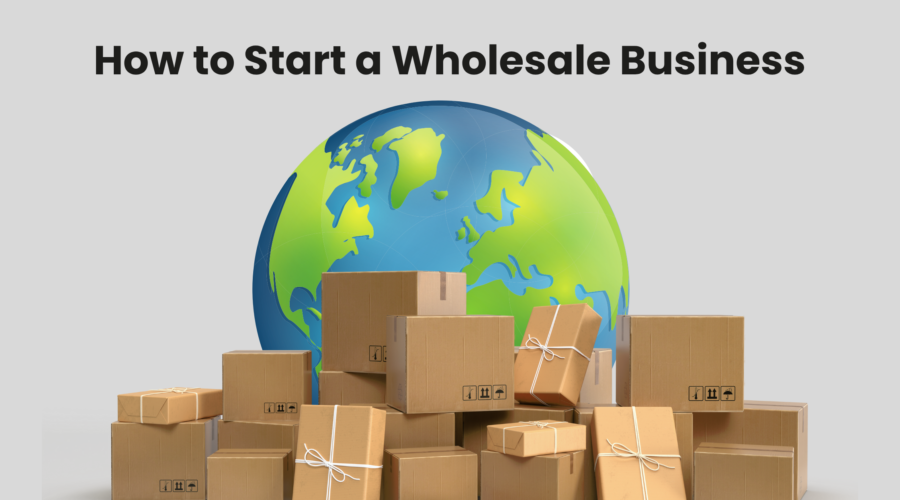Wholesale Business – How to start and grow
Given the growing demand for bulk purchases from retailers, internet sellers, and small enterprises, starting a wholesale business may be a very lucrative endeavor. Entering the wholesale market offers high profit margins and long-term scalability, regardless of your product’s target market: clothing, electronics, health care items, or general retail. We’ll take you step-by-step through the whole process of starting a successful wholesale business in this book, from identifying your niche to cultivating connections with suppliers and buyers.
Understanding What a Wholesale Business Is.
Purchasing goods in bulk from producers or distributors and reselling them to retailers, resellers, and other companies constitutes a wholesale company. Wholesale depends on large sales at reduced pricing, as opposed to retail, where you sell goods to customers one at a time. The objective is to serve as an intermediary between producers and retailers, giving consumers access to items at affordable costs while preserving a reasonable profit margin.
Choosing a Niche Market
Prior to beginning product sourcing, you must select a market segment that is profitable and in line with demand.
What sectors of the economy are expanding at the moment?
Do you have a strong interest in or understanding of any particular field?
Who are your possible customers?
In 2025, some popular wholesale niches include:
Products related to health and wellness
Clothes and fashion accessories
Eco-friendly household products
Products for infants and children
Electronics and accessories for phones
You can determine what is in demand and what your competitors look like by conducting in-depth market research.
Write a Business Plan for Your Wholesale Business
A company plan serves as a guide for you. It assists you in planning your operations, defining your objectives, and comprehending your financial requirements. A strong plan for a wholesale firm should contain:
An executive synopsis
Analysis of the market Business plan (dropshipping, B2B, etc.)
Strategy for pricing
Plans for marketing and sales
Estimates of finances
A well-thought-out plan is also beneficial when looking for collaborations or funding.
Register Your Wholesale Business and Legal Requirements
Depending on your nation or area, you must:
Register the name of your company.
Submit a business license application.
Obtain a certificate of resale, particularly in the United States.
Create a bank account for your business.
Recognize the tax obligations
Gaining the trust of suppliers and making sure you’re operating legally depend on this phase.
Search for Reliable Suppliers or Manufacturers
The quality, availability, and cost of your products are determined by your suppliers, so make an informed decision. Wholesale directories such as Supplier Central or Wholesale Central
Trade exhibitions and expos are good places to find suppliers. B2B websites such as
ThomasNet or Alibaba
Regional producers
Seek out vendors who:
Provide affordable bulk prices.
Maintain a steady inventory
Possess positive testimonials or references
Are you amenable to enduring collaborations?
Set up Storage and Logistics
Choose between using a dropshipping model, a fulfillment center, or a warehouse. Make sure you have the following if you intend to manage inventory:
Sufficient area for storing
Software for tracking inventories
Procedures for packing and shipping
To handle shipping and storage, a lot of wholesalers collaborate with 3PL (third-party logistics) companies.
Create a Website or an Online Catalog
A well-designed website makes it simple for retailers to find and place orders with you. Include:
A product catalog with costs and information about bulk orders, MOQ, or minimum order quantity
Terms of payment
Contact details “About Us” section to establish credibility
Additionally, you can list your goods on B2B websites such as Abound, Faire, or Supplier Central.
Market Your Wholesale Business
You must spend money on marketing if you want to attract customers. To rank your website for pertinent keywords, use SEO.
Run Facebook or LinkedIn advertising with a specific audience.
Attend industry gatherings and trade exhibits.
Distribute outreach emails to online retailers or retailers.
Produce material for your site to draw in natural traffic.
In wholesale, establishing connections is essential. Prioritize consistency, communication, and trust.
Set Wholesale Pricing and Payment Terms
Your prices must include:
The cost of the product
Transport and storage
Margin of profit
The usual range for wholesale markups is 20% to 50%.
To draw in large customers, establish clear payment terms (such as 50% up front and 50% upon delivery) and think about providing volume discounts.
Provide Excellent Customer Support
Wholesale purchasers anticipate prompt responses, precise fulfillment, and openness. To foster loyalty, provide a variety of contact methods, keep up a solid rapport with your customers, and promptly address any concerns.
Summing Up
One clever strategy to capitalize on the rising demand for bulk buying is to launch a wholesale company. The long-term potential is considerable, provided you remain focused, pick the proper niche, and sustain solid supplier-buyer connections, even though it requires preparation and work. This comprehensive guide will assist you in starting a wholesale business that is geared toward success in 2025 and beyond, regardless of whether you are selling electronics, fashion, or health products.
Read more about how to start a wholesale business. Click here.



